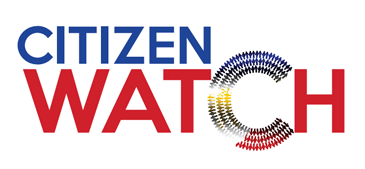Connectivity metrics for all public and private establishments
May 22, 2023originally published in The Manila Standard
“This means everybody inside an institution’s area of operations will have quality broadband access to all digital services they need to be productive”
According to the February 2023 report on internet usage in the Philippines published by STATISTA, improvements in internet infrastructure is driving the growth of internet users and considered as among the highest in the region.
The report said as of November 2022, “the average download speed of fixed internet in the country was 81.42 Mbps, while mobile internet had a download speed of 24.04 Mbps. 5G network has also been rolled out nationwide in multiple cities, further improving the country’s internet connection.
“In 2022, the average download speed of the 5G network was about 9 times faster than 4G.”
Filipinos spend an average 10 hours a day online, which is higher than the world average of under three hours.
The younger netizens are mostly logging in on Meta’s Facebook and Messenger, followed by TikTok and Instagram while the not so young (over 34 years old as classified by the report) are also doing social media stuff.
Since the pandemic, more access to the internet has made social media and e-commerce the go-to channels for online shoppers and has changed, I think even revolutionized, the Filipino consumers purchasing behavior opting for the convenience of using their devices to search and buy the products and services they need.
The report estimates by 2028 approximately 77.81 percent of the Philippine population will have access to the internet.
But if the government prioritizes investments in a nationwide expansion of digital infrastructure to make digital transformation initiatives happen, this can happen much sooner.
So far, the heavy lifting as far as investing to expand and upgrade the country’s digital infrastructure is being led by the private telcos.
Increasing internet usage also changed the shopping and banking landscape in the country.
This has led to the growth of e-commerce expenditures as more Filipinos were accessing a merchant’s website or shopping apps to buy products or services on any device.
Across channels, e-commerce platforms, and social media applications were the most preferred channels of Filipino online shoppers.
I do consider myself as a heavy internet user and needing to be online practically 24/7 to keep track of work-related correspondence and like the 86.68 million mobile phone users (STATISTA May 2023), I also spend some time streaming video, and music for some entertainment.
The smart phone is the most important communications and productivity tool in this digital world but without the stable and fast broadband services to access all the digital platforms we need every day, all we can do with it is call and text, which we can already do using various messaging apps.
If the broadband connectivity is too slow or if there isn’t even any Wi-Fi signal, we are pretty much cut off and will need to physically look for a signal to reconnect with and respond to all the messaging tasks we need to do.
I’m sure you’ve been in this situation where you’re in a building and can’t go online because of poor internet connection and can’t log into that important virtual meeting or have annoyingly intermittent signals making even audio only conversations impossible.
This is a gap in our ongoing digital transformation journey that needs the involvement of all property owners in both the public and private sectors.
As telcos are aggressively investing to expand the reach of wireless and wired broadband services, there needs to be clear standards for all buildings and public spaces to have integrated facilities to provide connectivity for all tenants, workers, customers, and visitors in their premises.
Just as electricity and water are required utilities in the building code, all buildings should be able to provide access to broadband services on demand.
One way to push property developers to retool their existing buildings and ensure that new ones are digitally ready is to come up with a clear standard of rating internet services to reflect the actual speed and quality of digital connectivity available in an establishment.
A rating system being broached by the private sector is a “Connectivity Index Rating” that would be intuitively simple to understand, similar to the five-star rating system that hotels and resorts are using.
There shouldn’t be much debate about this as the clear direction is towards gearing up to become competitive and prosperous in the digital global market.
It is actually a big boost to the brand image of an institution, government or privately owned, to get a five-star rating in connectivity.
This means everybody inside an institution’s area of operations will have quality broadband access to all digital services they need to be productive.
Developing the metrics of the Connectivity Index Rating is a policy innovation that the President can initiate with the members of the Private Sectors of Advisory Council that I am sure can be crafted expeditiously.
This will force the alignment of broadband services to the volume of user traffic in all establishments.
